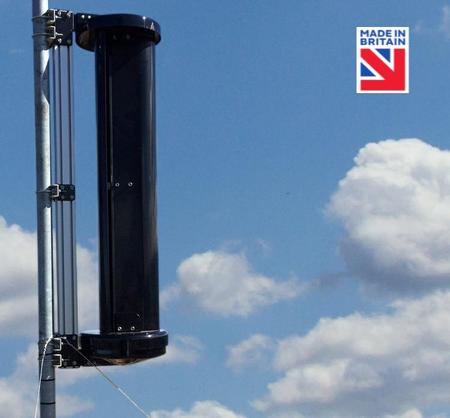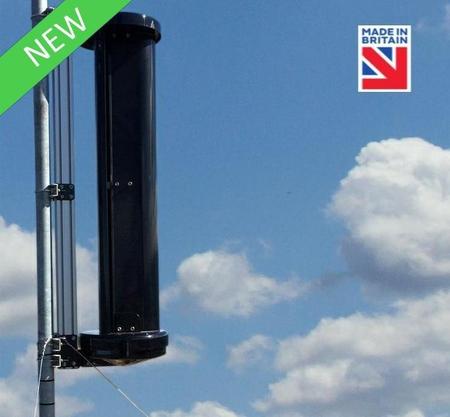Blog
Understanding the Advantages of Lifepo4 Battery Technology for Sustainable Power Solutions
In recent years, the demand for sustainable energy solutions has surged, prompting advancements in battery technology, particularly with Lithium Iron Phosphate (LiFePO4) batteries. As the global market for energy storage systems is expected to reach $25 billion by 2026, LiFePO4 battery technology has emerged as a frontrunner due to its safety, durability, and environmental benefits. LiFePO4 batteries are known for their exceptional thermal stability and long cycle life, boasting a lifespan of up to 3,000 cycles, significantly outpacing traditional lithium-ion counterparts. Furthermore, a report by the International Energy Agency (IEA) indicates that the adoption of LiFePO4 technology can reduce greenhouse gas emissions by up to 50% compared to lead-acid batteries, making it a pivotal component in the shift towards renewable energy sources. As we delve deeper into the advantages of LiFePO4 batteries, it becomes clear that they are not only a vital asset for energy storage but also a cornerstone for achieving sustainable power solutions. 
How to Assess the Longevity and Durability of Lifepo4 Batteries
When assessing the longevity and durability of LiFePO4 batteries, it is essential to consider several key factors that influence their performance over time. First and foremost, the cycle life of LiFePO4 batteries is notably superior, often reaching up to 3,000 to 5,000 cycles. This impressive lifespan is primarily due to the stable chemistry of lithium iron phosphate, which minimizes degradation during charge and discharge cycles. Moreover, the operating temperature range of these batteries plays a critical role in their longevity, with optimal performance achieved between 20°C and 60°C, allowing them to operate efficiently under various conditions.
Another significant aspect to evaluate is the battery management system (BMS) implemented within the LiFePO4 battery setup. A well-designed BMS ensures that each cell is accurately monitored and balanced, preventing overcharging and deep discharging, which can severely degrade battery life. Additionally, considering the environmental conditions where the batteries will be utilized—such as humidity and exposure to extreme temperatures—will provide insights into their durability in real-world applications. By combining these assessment strategies, users can effectively gauge the overall longevity and reliability of LiFePO4 battery technology for sustainable power solutions.
How to Maximize Efficiency with Lifepo4 Batteries in Energy Systems
LiFePO4 (Lithium Iron Phosphate) batteries have emerged as a cornerstone for sustainable energy solutions, particularly in maximizing efficiency in energy systems. According to a report by the International Renewable Energy Agency (IRENA), LiFePO4 batteries boast a lifespan of over 2,000 cycles, which is significantly higher than traditional lithium-ion batteries. This longevity reduces replacement frequency and overall lifecycle costs, making them an attractive option for both residential and commercial applications.
To fully harness the efficiency of LiFePO4 batteries, it's crucial to integrate them effectively into energy systems. A study by Bloomberg New Energy Finance highlights that optimizing charge and discharge cycles can lead to an efficiency rate exceeding 90%. Furthermore, when paired with renewable energy sources such as solar or wind, these batteries can store excess energy generated during peak production times, thereby reducing dependency on the grid and facilitating a seamless transition to renewable sources.
Strategic implementation of LiFePO4 technology not only enhances energy reliability but also supports carbon reduction goals, aligning with global sustainability targets.
How to Implement Lifepo4 Battery Solutions for Renewable Energy Storage
The implementation of LiFePO4 battery technology for renewable energy storage presents a promising avenue for sustainable power solutions. As the global demand for solar energy continues to rise, evidenced by the solar generator market projected to reach $591 million in 2024, the integration of LiFePO4 batteries becomes increasingly vital. Their long lifespan, safety features, and excellent thermal stability make them ideal candidates for storing energy generated from renewable sources, enabling efficient utilization and reducing waste.
Adopting LiFePO4 battery systems can significantly enhance the performance of solar energy installations. By providing a reliable and scalable storage solution, these batteries can store excess energy generated during sunny periods for use during peak demand times or cloudy days. This capability not only stabilizes energy supply but also promotes energy independence and resilience in local power systems. The growing market for renewable energy storage, expected to substantially increase by 2032, highlights the urgent need for integrating advanced battery technologies to optimize the benefits of renewable energy systems.
How to Compare Lifepo4 Batteries with Other Battery Technologies
When comparing LiFePO4 batteries to other battery technologies, several key factors come into play, including safety, lifespan, and environmental impact. LiFePO4, or lithium iron phosphate, is recognized for its superior thermal stability and safety characteristics when compared to lithium-ion batteries, which utilize cobalt and other metals that can pose fire risks. According to a report by the U.S. Department of Energy, LiFePO4 batteries have a much lower chance of thermal runaway incidents, marking them as a safer choice for various applications, from electric vehicles to renewable energy storage.
In terms of lifespan, LiFePO4 batteries continue to outperform traditional lithium-ion options, typically delivering over 2,500 charge cycles, which is significantly higher than the 500 to 1,500 cycles offered by most lithium-ion batteries. Studies from the International Renewable Energy Agency (IRENA) highlight that the extended cycle life of LiFePO4 translates to lower total cost of ownership, as users can rely on them for a longer period without the need for replacement. Additionally, the environmental benefits cannot be overlooked; with a lower reliance on cobalt, LiFePO4 batteries contribute to a decrease in resource extraction impacts, aligning with the global push for sustainable energy solutions.
Understanding the Advantages of Lifepo4 Battery Technology for Sustainable Power Solutions
| Battery Type | Energy Density (Wh/kg) | Cycle Life (cycles) | Charge Time (hours) | Temperature Range (°C) | Environmental Impact |
|---|---|---|---|---|---|
| LiFePO4 | 90-160 | 2000-5000 | 4-8 | -20 to 60 | Low toxicity, recyclable |
| Lithium-ion | 150-250 | 500-2000 | 1-4 | 0 to 50 | Moderate toxicity, recyclable |
| Nickel-Metal Hydride (NiMH) | 60-120 | 500-1000 | 1-6 | -20 to 60 | Low toxicity, less recyclable |
| Lead-Acid | 30-50 | 300-700 | 8-16 | -20 to 50 | High toxicity, recyclable |
How to Optimize Charging Practices for Lifepo4 Batteries in Sustainable Applications
Optimizing charging practices for LiFePO4 (lithium iron phosphate) batteries is crucial to maximize their performance and lifespan in sustainable applications. One of the key strategies is to utilize a dedicated charging protocol tailored specifically for LiFePO4 technology. This includes setting a charging voltage of around 3.6 to 3.65 volts per cell, which not only enhances safety but also prevents overcharging that can lead to decreased battery lifespan and efficiency. Furthermore, implementing a constant current-constant voltage (CC-CV) charging method allows for a controlled and gradual approach, ensuring the battery reaches full capacity without compromising its structural integrity.
Another important practice is to monitor the temperature of the batteries during the charging process. LiFePO4 batteries operate optimally within a temperature range of 0°C to 45°C. Charging outside this range can lead to thermal stress and potential damage. Additionally, integrating smart charging systems equipped with temperature sensors can ensure that the charging process adapts to environmental conditions, which not only enhances safety but also boosts the overall efficiency of the energy system. By embracing these best practices, users can significantly extend the lifecycle of LiFePO4 batteries and contribute to more sustainable energy solutions.
Understanding the Advantages of Lifepo4 Battery Technology for Sustainable Power Solutions
This chart illustrates the charging efficiency and life cycle of Lifepo4 batteries compared to traditional lead-acid batteries, emphasizing the benefits of adopting Lifepo4 technology for sustainable applications.
Tell us about your project
Our Off-grid experts will come back with recommendations






